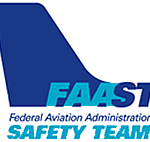

Lower operating costs and the smaller ecological footprint of turboprops ensures that we are likely to see a resurgence in use of these aircraft. Engine technology has provided enough power to operate at near jet speeds, at substantially lower fuel burn and with less pollution. Indeed a turboprop typically burns just under two thirds of the fuel needed to fly a passenger compared to a pure jet. It is generally accepted that for routes between 300 to 500 miles a turboprop is faster and more economical than a pure jet. Turboprops do not have to climb as high and therefore reach cruise faster and descend quicker.
But single-pilot operations, lack of adequate training and intentional disregard of AFM/POH are creating a high risk in certain flight phases. This vulnerability is statistically proven and known to insurance companies.
Our two hour workshop will shed some light, what it really means to fly a turboprop to its potential and what a pilot has to expect when doing so.
- Likelihood to be involved in an accident with a turboprop;
- In what phase of flight do things go wrong?
- Crash Part 91 vs. Part 135?
- Single vs. twin?
- Knowledge, rule or skill based accidents;
- Violation and mistakes - an illustrative excerpt of accident reports;
- Accident prevent strategies for turboprop pilots.
Speaker: William Pass | Training Captain
 This workshop is in cooperation with the FAA Safety Team (FAAST)
This workshop is in cooperation with the FAA Safety Team (FAAST)
$15
non-members
$0 (FREE)
loading map - please wait...
